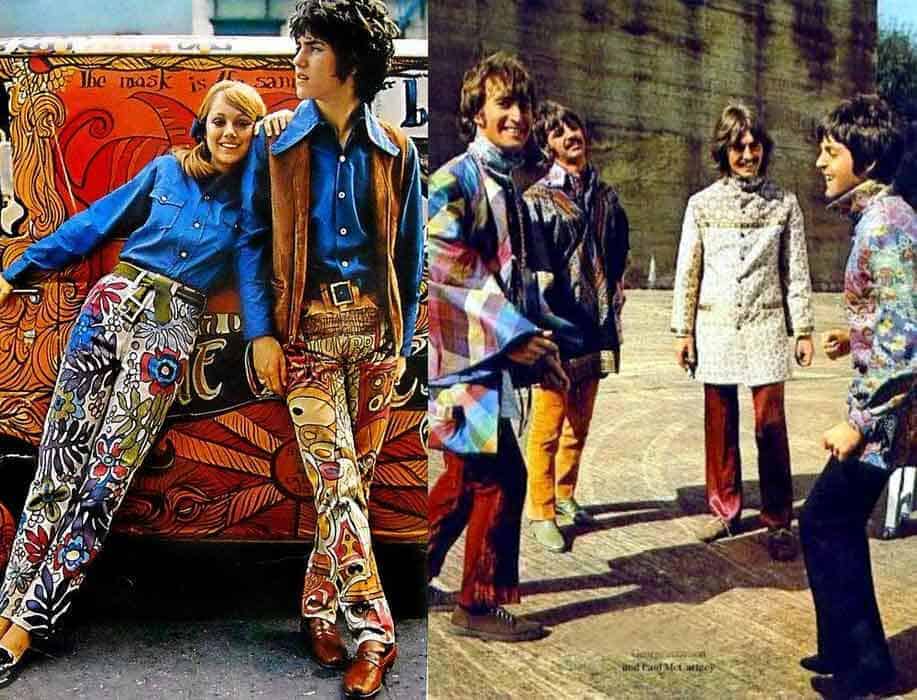
How Psychedelic Fashion Began
In the 1960s, there were enormous social and political transformations in the fashion industry. The utilization of synthetic stimulants was the standard, and fashion was comfortably playing to the tune. The fact is it was unavoidable that both would connect. The main impact of the “LSD trip” involved an uplifted appreciation for line, texture, and color. Psychedelic Fashion improved the entire stimulating experience with its bold patterns and bright colors. In the middle of the decade, small pockets fashions of youngsters in various urban settings got a lot of media attention. It vigorously impacted the mass-market manufacturers and elite designer’s haute couture. Examples involve go-go boots, culottes, and mini skirts. Also, increasingly experimental fashions. These fashions are not commonly found on the streets, for instance, PVC clothes and box-shaped dresses.
In the 1950s, there was an increase in Pop art. The art exhibited a challenge to beautiful art traditions by obscuring the boundaries between low and high cultures. Bizarre iconography, rubber-like distortions, collage elements, firmly symmetrical composition, and bright ornate lettering are the art style of San Francisco (they are art styles of San Francisco Psychedelic Poster). Wes Wilson, Alton Kelley, Stanley Mouse, Bonnie Maclean, Victor Moscoso, and Rick Griffin are poster artists in San Francisco involved in arts. They were the foremost advocates of the Psychedelic Movement of the 1960s. The rock concerts that they conducted got motivation from Dada, Victoriana, Pop, and Nouveau arts
What made Psychedelic dominate the fashion industry?
Psychedelic Fashion turned into a route for external reality transformed by the dreams projected by the internal screen of the mind. Psychedelic Fashion was mainly the quintessential movement of the 1960s. Although, in the end, numerous designers adjusted to Psychedelic design and fashion. The psychedelic idea was influential in the vocabulary fashion of 1960. The remarkable clothes positively owed something to the acid visions of phantasmagoria.
The Psychedelic and tribal patterns commonly combine with mottled designs of Indonesian and African textures. Additionally, it merges with showers of tie-dye and the phosphorescent splotches. Psychedelic Fashion was a Grass-roots Groundswell, a radically Demotic Movement, which in the end, produced an omnipresent acknowledgment. For example, in New York City, anyone could purchase Made-to-order Tie-dye outfits at Halston’s Salon on the Upper East Side on 68th Street and the Fur Ballon in Greenwich Village on West 4th Street. Psychedelic is a pattern, which can’t go unnoticed in the world of fashion. It is not just a statement of fashion; it is a tribe and family.
How Modern Fashion Operates
Menswear garments collections from the 2019 summer/spring seem to be showing that a significant number of leading players in the fashion industry work on similar wavelengths. In the present time, there is an open acceptance in the fashion of men (acknowledgment that there’re no rules). What compliments this is the way most individuals are progressively free to experiment in different ways. It is an anti-establishment feeling dependent on what is going on in the political scene. It is the same as the late 1960s youthquake but certainly in a modern way.
